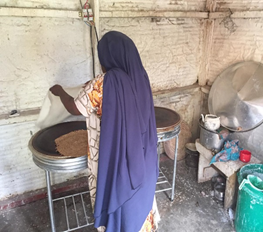Europe was inundated by asylum seekers and other migrants in 2015. Seventy-eight percent of these asylum seekers were from Syria, Afghanistan, and Iraq, and another 11 percent were of African origin from countries such as Somalia, Eritrea, Sudan, Gambia, Senegal, and Nigeria. In the case of the African migrants, measures taken by the European Union to contain them will have no impact unless global economic inequalities are addressed. Some member states of the EU, such as Germany, initially responded to the mass influx by allowing asylum seekers to enter their territories. However, after it became apparent that the flow of migrants was not going to relent, they embarked on a series of measures to dissuade refugees from attempting to enter Europe. These included erecting fences along borders, confiscating migrants’ property, and enforcing legal hurdles to family reunification. The EU also announced that it would financially support African front-line states, such as Ethiopia and Kenya, as well as transit states like Turkey, which are expected to take on the burden of hosting migrants in the wake of Europe’s refusal to do so. The money will be used to improve living conditions, so that refugees and asylum seekers will be discouraged from leaving, as well as to strengthen border controls in an effort to limit emigration. These responses rely on two major assumptions. One is that refugees move solely to obtain protection. This leads to European states refusing to admit refugees who have either already been recognized in other countries or have decided to pass through a country that is obligated to grant them international protection, as they are perceived to have already been offered the asylum they were seeking. This assumption denies the human agency of refugees by ignoring other legitimate human aspirations, such as earning a decent wage or improving basic living conditions. Until this assumption is challenged and thoroughly interrogated, the secondary movements of refugees will continue. This assumption is further challenged by the structural inequality pull factor hypothesis, which posits that the movement of people from poor to wealthy states is caused by the relative economic opportunities offered in each of the two sets of states. Wealthy states offer relatively more economic opportunities, and will therefore attract residents of poorer states. With this in mind, it is hard to accept that refugees coming from poor states will remain in countries of first asylum if those
2
countries aren’t able to offer substantial economic opportunities. In other words, even though their requests for international protection have been granted, they will continue to migrate to wealthier states in pursuit of economic well-being. The second assumption made by European leaders is that African states can sufficiently control their borders. The EU has announced that it will offer African states $2 billion, some of which is expected to go toward improving border monitoring and control. However, the situation for these African states is too complicated to be resolved by this aid package alone, as many of their borders are long and porous. For example, Kenya, which shares a 500-mile border with Somalia, has experienced a spate of attacks related to al-Shabab since 2011, attesting to a breakdown in border policing. This problem is not unique to Kenya, but is pervasive on the African continent. So where does this leave the African refugee and asylum seeker? The impetus for secondary migration will be stronger, as viable avenues for permanent resettlement, long recognized by the international community as a durable solution for refugees, will be limited. Owing to the large numbers of refugees already in Europe, it is highly unlikely that European states will be willing to take in more. Even more significantly, as African countries currently accepting asylum seekers develop increasingly unfavorable conditions for newcomers’ economic emancipation, more and more refugees will hazard the journey to Europe for a chance to improve their lives. The already hazardous conditions faced by these migrants are exacerbated further by their reliance on the “services” of human smugglers and traffickers to transport them across closed borders. Some 5,000 migrants have drowned in the Mediterranean while trying desperately to reach the shores of Europe. This figure may very well increase so long as the desire for secondary migration among refugees exists and the legal means for it is limited. Another hazard for refugees and asylum seekers, particularly in the Horn of Africa, is the risk of refoulement. In refugee law, non-refoulement states that it is forbidden for states to return refugees to areas where their lives or physical integrity would be jeopardized. However, many states, such as Kenya, where the majority of refugees come from Somalia, have longed viewed these populations as threats to national security. The longer these refugees stay in such states, the greater the likelihood that they’ll be coerced to return to their countries of origin. Given the lack of resettlement opportunities and the unwillingness of host states to naturalize them as citizens, the risk of refoulement is high. The migration crisis in Europe may have been triggered by an escalation of violent conflict and human right abuses, but it is sustained by the structural inequalities extant in the international economic system. So long as there is structural inequality coupled with violent conflict and persecution in the global south, mass migration will continue unabated.




